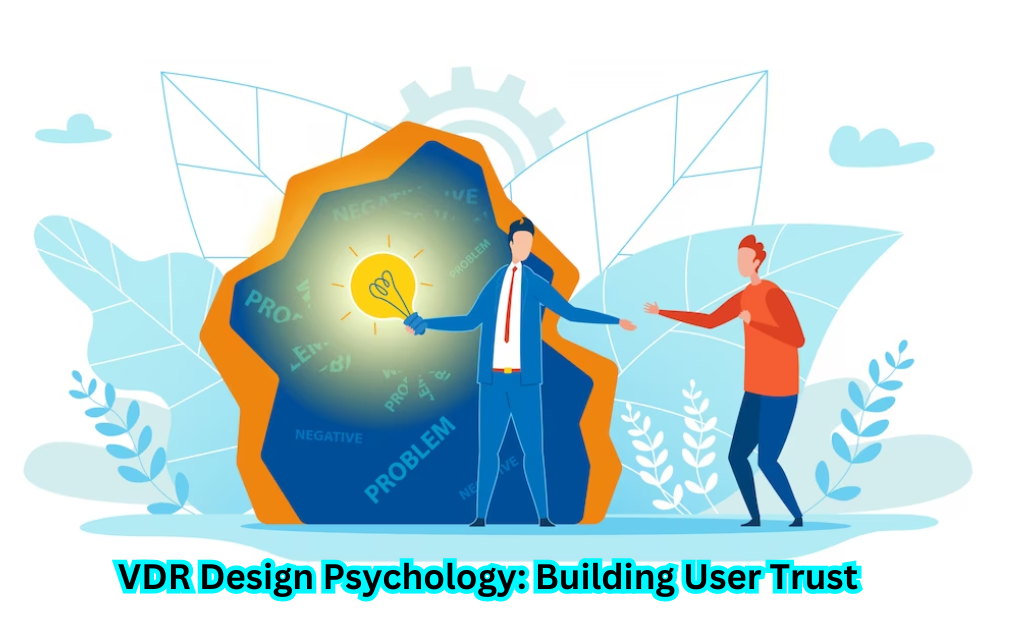Virtual Data Rooms (VDRs) are crucial for ensuring that sharing data is safe and quick in today’s fast-paced digital world, where sharing information is key to doing business. Businesses increasingly depend on VDRsto to keep their private data safe during mergers, acquisitions, and other important business deals. This is why VDR design psychology is so important for gaining user trust.
How to Open the Door to Trust
To store and share private papers safely, people use virtual data rooms. A VDR’s design psychology is more than just how it looks; it also includes making a setting that helps users trust each other. It’s not just the colors and style of the user interface that affect how secure a system seems to the user.
A. User-Friendly Interface
An easy-to-use interface is one of the most important parts of VDR design psychology. Users should be able to easily find the information they need in the VDR without dealing with many extra steps. This makes people feel confident because they know they are in charge of the platform.
B. Security Video: More Than What You See
Visuals that show safety, like padlocks, encryption icons, and other signs, are very important for building trust among users. These parts shouldn’t just be for looks; they should be signs of strong security measures that are in place. Being open about showing off security features makes the VDR seem more trustworthy.
The Power of Seeing
VDR design psychology takes advantage of perception being a big part of gaining trust. People are more likely to believe a site that makes them feel safe. This is where the design’s color scheme, fonts, and general look come into play. People often feel safe and trusting when they see cool colors like blues and greens. This gives them a subconscious sense of confidence.

How to Get Through the Maze: An Easy-to-Use Guide
Ensuring users feel safe while using the VDR is an important part of trust. Adding user-friendly features like drag-and-drop functions, help sections that are easy to find, and helpful customer service that responds quickly all help to build this sense of trust. Users automatically trust when they feel encouraged and well-informed.
How Color and Design Work in Your Mind
The colors used in a video doorbell (VDR) are not just for looks; they also directly affect how safe people feel. If you think of efficiency and reliability, blues and grays come to mind. When artists know how colors affect people’s minds, they can make a place that feels trustworthy.
How to Find the Best Balance Between Contrast and Readability
Readability is very important when it comes to VDR design. Having a lot of differences between the text and the background makes it easier to read and shows that you care about being open and honest. Colors and differences can send a message of openness and clarity without you even realizing it.
Approach Focused on the User
VDR design psychology focuses on the customer to build trust. To do this, you must know what people want and need during high-stakes deals. Users can change screens, receive personalized alerts, and decide what access levels they have, which reinforces the idea that safety and comfort are the most important things.
Changing Based on What Users Say
Trust goes both ways, and VDR creators need to be open to what users have to say. Regularly changing the VDR based on user ideas makes it work better and shows a dedication to security and ongoing improvement.
It’s important to be open and honest.
VDR design psychology fully supports the idea that being open and honest is key to building trust in any business interaction. Clearly explaining the security measures in place, including access logs and giving users a full picture of how their data is treated, builds trust by making things more open and clear.
It’s everyone’s job to teach users
VDR design psychology has a teaching part in addition to showing off protection features. VDRs give users the tools they need to protect their data by giving them information on handling data safely and using the platform’s safety features. This shared duty builds trust and strengthens the bond between the user and provider.
We are building trust bridges in the digital world
Regarding Virtual Data Rooms, design psychology is more than just making tools look good. Changing users’ thinking, boosting their confidence, and eventually earning their trust is a planned process. Every design choice, from easy-to-use platforms to carefully picked color schemes, adds to the story of security and dependability.
As long as businesses use VDRs for important deals, knowing and using design psychology is not only a way to stay ahead of the competition but also a must. VDRs can build trusting relationships that can stand up to the challenges of the digital world by putting user-centered design first, being open, and responding to user input. Secure data sharing is more than just how something looks; it’s also how it talks to users, reassuring them that their data is not only saved but also kept safe at all times.
FAQs on VDR Design Psychology: How to Get Users to Trust You
Online data rooms, or VDRs, are like guards for private data in the complicated world of data security. This piece walks you through the complex world of VDR Design Psychology and the strategic combination of aesthetics and usefulness. It shows how deliberate design choices affect the user experience and build trust in the constantly changing world of digital transactions. Let’s look at the Frequently Asked Questions (FAQs) of VDR Design Psychology to learn more about how to build trust with users in the world of safe data sharing.
How do you get people to trust VDR Design Psychology?
Using VDR Design Psychology to build trust in users means making a virtual world that is easy to use and looks good. Focus on making the user experience easy to understand, using security visuals correctly, and ensuring the method is user-centered. Adding features that make the Virtual Data Room easier to use and safer makes users feel confident using it, which builds trust.

What makes people more likely to believe VDR Design?
Have faith in psychology in VDR Strategic factors that affect how users see things shape design. Building trust requires an easy-to-use interface, clear actions, and a carefully chosen color scheme. Understanding the psychological effects of design choices like color choice and readability can help VDRs create an atmosphere where users will connect, making them feel safe and trustworthy.
How can VDR Design help people understand psychology today?
A modern knowledge of user wants is key to building trust in psychology, which is always changing. VDR Design Psychology focuses on the user, responds to user comments, and uses the newest design trends. VDRs can make their designs more trustworthy for people doing important deals by keeping up with the latest changes in psychology.
What parts of trust are there in VDR Design?
Different parts of VDR Design that build trust are an easy-to-use interface, security images, and a focus on the customer. Color choices and contrast are very important for building trust. Being open about how things work and teaching users how to use them also helps. When these things work together, they make the person feel safer, which builds trust in the digital world of sharing data.

